Karuka
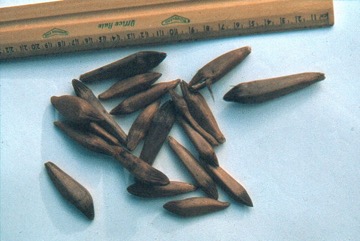
A tropical plant. Trees grow between 1800 and 2500 m altitude. It grows in the highlands. They do best in the forest clearings. They also occur in Papua Province of Indonesia. Outside this range it often does not grow well. They do best in the forest clearings. The micro-environment for karuka to grows best includes fairly good soil fertility such as along the banks of small creeks; in the natural hollows that occur around the edges of hills, and around the edges of small clearings in the bush. Karuka on knobs in the grassland often only bear small nuts.
Also known as:
Aenk, Ama, Amo, Anga, Ank, Maisene, Tuke
Edible Portion
- Nuts, Seeds
Where does Karuka grow?
Found in: Asia, Indonesia, Pacific, Papua New Guinea, PNG, SE Asia
Notes: There are about 600 Pandanus species. They grow in the tropics. Demo
Status: A very important nut crop in high altitude areas.
Growing Karuka
Cultivation: Trees can be grown from seed. More commonly vegetative cuttings of the top section of a branch is used. This is suitable for a tree that has several branches. When planted in moist fertile soil it quickly develops roots and becomes established. This maintains the trees true to variety. Old trees with a number of branches tend to have smaller clusters of fruit because the fruit are competing on the same plant for their requirements so this pruning inproves production. Sometimes karukas develop young suckers or shoots near the ground. When these are seen, they are broken off and replanted from these vegetative suckers. All cultivated karuka are planted. Seedling trees are slower to produce and have a taller straighter trunk. Karuka can be grown from seeds. It is best to wait till the nuts are fully ripe and start falling naturally from the tree. These nuts are taken and planted while fresh. They are planted in the shell with the bristles uppermost. Normally the seeds are established in a nursery and then transplanted to their permanent sites a few months later. Clonally propagated trees produce 5-8 years after planting. To produce good sized nuts the karuka plantation needs to be kept free of weeds. Fruiting is seasonal and probably biennial for any individual branch of the tree. One crown of leaves on the one branch of a karuka tree normally only produces one cluster of nuts (called a syncarp ) during the one season. In fact, that particular branch normally only produces one bunch every second year. Both the kernel inside the individual nut is eaten and the mesocarp inside the cephalium is eaten. Karuka nuts can be harvested before they are fully ripe by climbing the tree and cutting the whole bunch. When this is done, the fruit bunch is cut in half the central pink portion cooked and eaten and the two halves with the outside skin burnt off can be stored in a platform above the fire. These halves can be cooked over hot stones and the nuts eaten. The season is normally Dec to Feb but may occur in mid year. Trees last 50-60 years. The nuts can be eaten raw or cooked. Dried nuts store well
Edible Uses: The nuts can be eaten raw or cooked. The flesh in the centre of the fruit can be eaten cooked. Dried nuts store well.
Production: The season is normally Dec to Feb but may occur in mid year. Trees bear every second year. They take 5-8 years from planting to first harvest. Trees last 50-60 years. An average karuka fruit can be about 6 kg weight. It is about 25 cm high and 20 cm across. It contains about 1000 separate nuts. After burning off the outside and removing the stalk, the weight is about 5 kg. A single kernel weighs about 0.5 g. The weight of edible kernels in a fruit is about 8% of the total fresh weight or about 0.5 kg.
Nutrition Info
per 100g edible portion| Edible Part | Energy (kcal) | Protein (g) | Iron (mg) | Vitamin A (ug) | Vitamin c (mg) | Zinc (mg) | % Water |
|---|---|---|---|---|---|---|---|
| Seed | 686 | 11.9 | - | - | - | - |
Karuka Photos

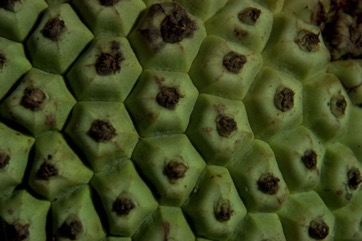
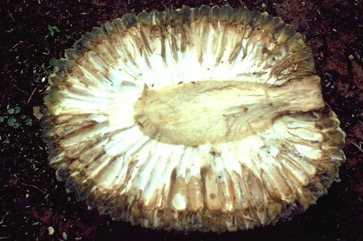
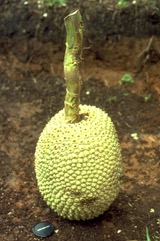
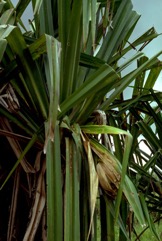
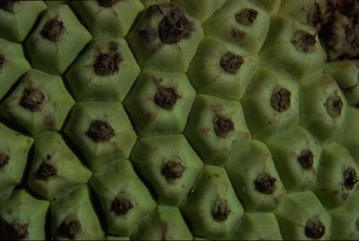
References
Karuka references (Pandanus jiulianettii)
Bourke, M., 1995, Edible Indigenous Nuts in Papua New Guinea. In South Pacific Indigenous Nuts. ACIAR Proceedings No 69, Canberra. p 46
Bourke, R. M., Altitudinal limits of 230 economic crop species in Papua New Guinea. Terra australis 32.
French, B.R., 1986, Food Plants of Papua New Guinea, A Compendium. Asia Pacific Science Foundation p 158
Massal, E. and Barrau, J., 1973, Food Plants of the South Sea Islands. SPC Technical Paper No 94. Nounea, New Caledonia. p 27
PROSEA (Plant Resources of South East Asia) handbook, Volume 2, 1991, Edible fruits and nut. p 241
Purseglove, J.W., 1972, Tropical Crops. Monocotyledons. Longmans p 512
Rose, C.J., Preliminary Observations on the Pandanus Nut. (Pandanus jiulianettii Martelli) in Bourke, R.M., & Kesavan, V., 1982, Proceedings of the Second Papua New Guinea Food Crops Conference. Vol 1 p 160- 167.
Sillitoe, P. 1995, An Ethnobotanical Account of the Plant Resources of the Wola Region, Southern Highlands Province, Papua New Guinea. J. Ethnobiol. 15(2): 201-235
Walter, A. & Sam C., 2002, Fruits of Oceania. ACIAR Monograph No. 85. Canberra. p 214, 281
Wickens, G.E., 1995, Edible Nuts. FAO Non-wood forest products. FAO, Rome. p 172
Wiriadinata, H., 1995, Ethnobotany of Economic Plants in the Baliem Valley, Jayawijaya, Irian Jaya, Indonesian Institute of Science, Bogor, Indonesia
World Checklist of Useful Plant Species 2020. Royal Botanic Gardens, Kew